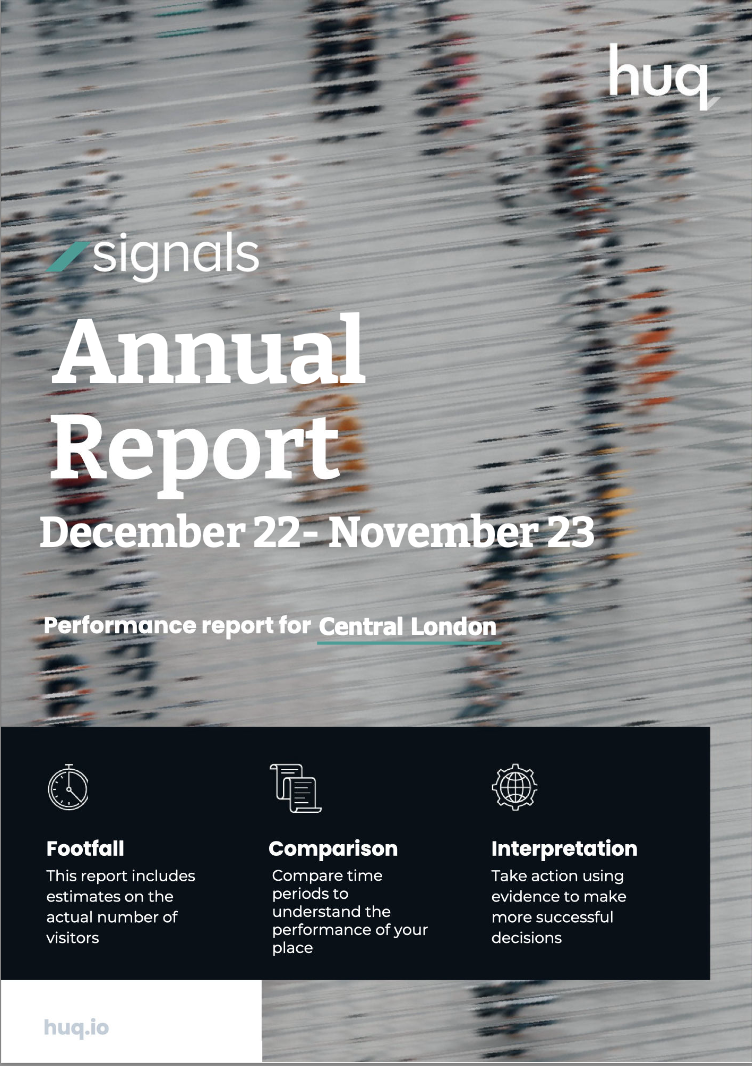Week 6 2025 Retail Parks: Key Insights from Location Analytics

UK retail parks show a modest recovery with improved footfall and dwell time, revealed by Location Analytics and Location Intelligence insights.
UK retail parks recorded an average daily footfall of 16,500 in the week ending 2025‑02‑16, reflecting a modest week‑on‑week increase while still showing a notable decline compared with the same period last year. According to Location Analytics data, these figures signal a cautious recovery in the short term even though the longer‑term trend continues to present challenges for UK retail parks and overall footfall.
Regional Footfall Breakdown
Breaking down the data by region, England led with an average of 16,900 daily visits, experiencing a modest uptick over the previous week despite a clear year‑on‑year decline. Scotland’s retail parks followed with an average of 15,900 daily visits; although weekly numbers remained relatively steady, the longer‑term trend still points to a noticeable reduction compared with last year. In contrast, retail parks in Wales recorded a lower average of 11,500 daily visits, with both the recent metrics and historical comparisons indicating a downturn in visitor numbers. This analysis of footfall reinforces insights from both Location Analytics and Location Intelligence regarding consumer engagement.
Dwell Time Analysis
Complementing the footfall data, dwell time continues to offer insight into customer engagement across these out‑of‑town destinations. Overall, visitors spent an average of 70 minutes per visit during the reporting period—a slight reduction on a week‑on‑week basis that is outweighed by a small improvement over the longer term. In England, dwell time mirrors the overall average, whereas visitors in Wales spent a marginally longer period of 74 minutes per visit. This sharp increase compared with the previous year suggests that while footfall may be dwindling, those who do visit tend to engage more deeply in their dwell time. Meanwhile, Scottish retail parks saw an average dwell time of 65 minutes, with a moderate softening noted compared with the previous week.
Industry Updates
These emerging trends come as retailers continue to adjust their strategies amid shifting consumer behaviour and a dynamic economic climate. Recent industry news shows a mixed picture. For instance, Nike’s closure of its store at a Scottish retail park in Craigleith, as reported by The Herald, underscores the pressures confronting some brands in this channel. In contrast, a huge fashion brand is capitalising on growth opportunities with the opening of a new store at The Fort shopping centre in Birmingham, a move covered by MSN. The expansion strategy is further evidenced by Lidl’s plan to launch nine new UK stores, bolstering its presence on the retail park estate as highlighted by MSN. Conversely, the closures of several Homebase outlets—reported by both Time Out and The Sun—highlight the cautious approach taken by some retailers in the current market environment.
Weather Impact and Economic Outlook
The broader UK economic backdrop further adds context to the footfall results. While recent economic commentary from FashionUnited UK noted that January storms boosted online and non‑essential spending, other analyses have highlighted the ongoing uncertainty in consumer spending. For example, Retail Week reported that although wages are rising, the effect on overall consumer expenditure remains to be seen. Furthermore, a recent report by Investing.com UK flagged a notable decline in retail sales, while contrasting views from EDP24 and The Irish News suggest that the sector may be benefiting from sporadic bursts of positive momentum.
Weather conditions also played a role in shaping this week’s outcomes. Advanced weather maps indicated that many parts of the UK experienced a deep freeze with temperatures dipping as low as -3°C, followed by snow that gradually spread across the country, with rare warnings of freezing rain issued as noted by The Mirror and Metro.co.uk. Such conditions may have dampened visitor enthusiasm and influenced the overall footfall numbers, particularly in areas more sensitive to adverse weather.
Conclusion
Joe Capocci, spokesperson for Huq Industries, stated, “The current week’s data underlines the resilience of retail parks despite persistent challenges. While short‑term trends offer some reassurance, our team is closely monitoring how evolving economic and weather conditions impact consumer behaviour.” In conclusion, the latest data from UK retail parks presents a picture of cautious improvement in the short term against a backdrop of long‑term challenges. Retailers continue to adapt, balancing store closures and new openings to align with evolving consumer habits and external pressures such as economic shifts and weather extremes. As the sector navigates these complexities, the ongoing tracking of footfall, dwell time, and overall consumer engagement remains a crucial tool for both Location Analytics and Location Intelligence insights.
About Huq Industries
Huq Industries is the leading provider of location intelligence across the UK, Europe, and the Middle East, specialising in high-quality data insights on footfall, consumer behaviour, and retail performance. Traditional analytics show how stores are performing, but Huq goes further—uncovering why. By leveraging advanced analytics and an extensive location data network, Huq Industries helps retailers and analysts understand the real drivers of success, predict future trends, and make data-driven decisions to optimise store performance in an evolving high street and town centre landscape.

